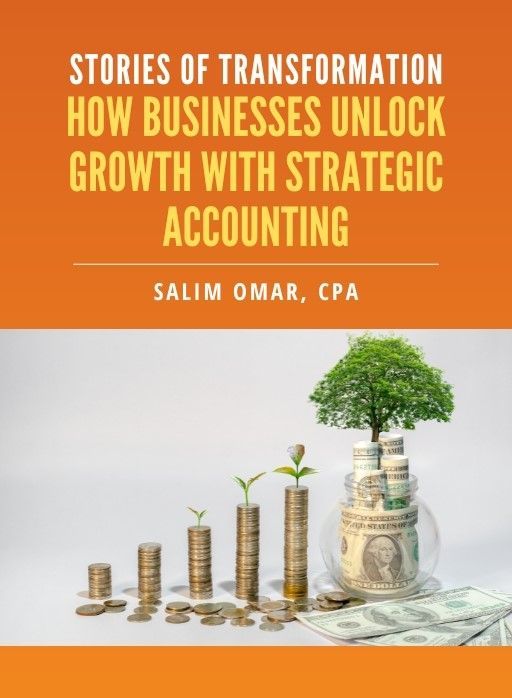Fueling Q4 Growth: Smart Budgeting and Cash Flow Moves to End the Year Strong

For many businesses, Q4 isn’t just the last quarter—it’s the golden quarter. The final months of the year often bring seasonal sales spikes, contract renewals, and year-end spending by clients looking to maximize tax deductions.
But it can also bring higher expenses, inventory shortages, and unexpected costs. That’s why budgeting and cash flow forecasting are non-negotiable if the goal is to finish strong and head into the new year with momentum.
Straight Talk CPAs has worked with countless growth-minded companies who’ve turned Q4 into their most profitable period—not because they crossed their fingers and hoped for the best, but because they had a clear plan backed by real numbers.
Step 1: Revisit Your Q4 Budget (Yes, Even If You Made One in January)
A budget that worked nine months ago may not align with the realities of Q4. Market conditions, client demand, and operational costs shift throughout the year. Here’s where to focus:
- Sales projections – Adjust based on YTD performance, seasonal trends, and confirmed contracts.
- Cost of goods sold (COGS) – Factor in any supplier price changes, shipping surcharges, or rush-order fees.
- Marketing spend – Q4 is prime time for promotional campaigns—allocate budget where ROI is proven.
- Capital investments – If you’ve been delaying equipment purchases, consider whether year-end tax deductions make buying now worthwhile.
One client in the tech services industry entered Q4 with a stagnant budget from January. After a review, they shifted $50,000 from underperforming ad channels to targeted client retention efforts, netting an extra $200,000 in Q4 contracts.
Step 2: Cash Flow Forecasting That Goes Beyond Guesswork
Cash flow is the lifeblood of any business, but it can become unpredictable in Q4 due to seasonal swings. The solution? Build a rolling 13-week cash flow forecast. This short-term approach helps spot bottlenecks early and plan for both surpluses and shortfalls.
Key elements to include:
- Confirmed receivables – Not just invoices sent, but payments you know will clear.
- Likely delays – Factor in clients who historically pay late, especially around holidays.
- Large outflows – Bonuses, inventory purchases, tax payments, or marketing blitzes.
- Scenario planning – Model “best case,” “expected,” and “worst case” outcomes so there are no surprises.
One eCommerce client used this method to identify a potential $80K shortfall in early December. By spotting it in September, they secured a short-term line of credit and avoided missing supplier payments during their busiest sales week.
Step 3: Prepare for the People Side of Q4 Growth
Scaling often requires more hands on deck. But in Q4, hiring too late—or hiring without a plan—can drain resources instead of fueling growth. Businesses should consider:
- Seasonal hiring – Perfect for handling holiday order spikes or year-end project deadlines.
- Cross-training – Prepares existing staff to handle multiple roles if demand shifts suddenly.
- Outsourcing –
Accounts payable, accounts receivable, and
CFO consulting can free up internal teams to focus on sales and client delivery.
A professional services firm we worked with outsourced their accounts payable in October. By December, their internal team had reclaimed over 100 work hours—time that went directly into closing year-end deals.
Step 4: Align Q4 Moves with Tax Strategy
Every financial decision made now has a ripple effect on year-end tax liabilities. Work with a CPA to determine whether accelerating expenses or deferring income could lower your tax bill. Examples include:
- Purchasing qualifying equipment before December 31 for potential Section 179 deductions.
- Prepaying certain business expenses to capture deductions in the current year.
- Reviewing outstanding invoices to decide whether to push them into Q1 for revenue timing benefits.
Straight Talk CPAs often finds that proactive year-end tax planning can add up to
five-figure savings—even for businesses that thought they’d already optimized.
Final Word
Q4 success isn’t just about working harder—it’s about working smarter. Businesses that update their budgets, forecast cash flow with precision, plan for staffing needs, and align moves with tax strategy are the ones that finish the year with stronger revenue, better margins, and a head start on the competition.
Straight Talk CPAs can help you fine-tune these
strategies so you’re not just chasing growth—you’re controlling it.
Free eBook:
Stories of Transformation


Salim is a straight-talking CPA with 30+ years of entrepreneurial and accounting experience. His professional background includes experience as a former Chief Financial Officer and, for the last twenty-five years, as a serial 7-Figure entrepreneur.




